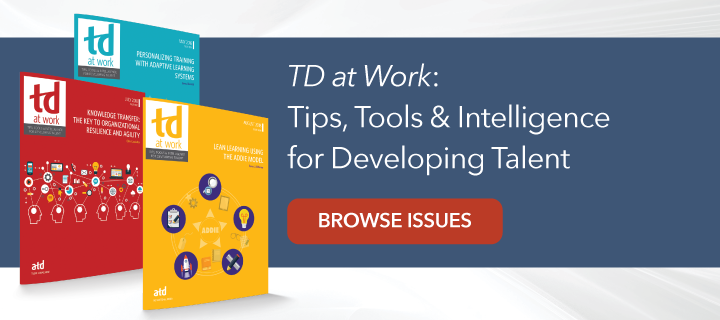What do you as a talent development practitioner know about your organization’s business strategic planning process? When does it occur? Who is responsible for developing it? And, from where you sit, how do you answer the all-important question, “How does talent development play a role in this process?”
In “Business Acumen Basics for Talent Development,” Robert S. Brodo explains that the business ecosystem analysis is an excellent tool for talent development professionals to use to develop an understanding of their organization’s business environment. Through it, you can determine what your business has to offer its customers or potential customers, your business’s competitors, and the driving forces of government, supply chain, and adjacent markets that affect your organization.
When you better understand the value your company offers its customers, you will be in a better position to help them deliver that value.
As you develop your business acumen, you can begin to chart the path forward by considering the following questions around your business ecosystem and value proposition:
- As a business, where are we now? Where are we going?
- Who are our competitors, and what are their strategies?
- Is there a low or high likelihood for new competitors? How does this affect the talent development strategy?
- How does the government, supply chain, and adjacent markets impact our industry?
Understanding these issues will allow you to have conversations with the C-suite so that you can design solutions that fit with your value proposition and align with the realities of the business environment.
Once you have had business information dialogues with three to 10 internal stakeholders to gather their thoughts on competition, possible disruption, potential issues or challenges around the supply chain, and how your organization’s customers might be changing, you can offer talent development solutions that will likely fall into one or more of the following categories:
- improving foundational business acumen of the entire organization
- providing technical skills to move from an existing business model to a future business model
- enhancing leadership skills to lead change and innovation
- transforming sales efforts to a more strategic approach
- instilling a market-driven culture
- cultivating a performance-driven culture.
Once you design and develop your talent development programs and solutions, and they have been implemented, you can put into a place a system for measuring their success. With newly developed business acumen skills, you will be able to understand the impact of your talent development solutions, writes Brodo. “At the end of the day,” he concludes, “executives and senior leaders will engage with talent development professionals if—and only if—they think you will add value and help them achieve their goals and objectives.”




